Curriculum Mapping
Discover a guide to curriculum mapping principles and practices, helping teachers plan lessons for effective, inclusive learning outcomes.


Discover a guide to curriculum mapping principles and practices, helping teachers plan lessons for effective, inclusive learning outcomes.
Curriculum mapping is the process of documenting and aligning the instructional standards and outcomes of a curriculum. It provides teachers with a clear overview of what is being taught, when it is being taught, and how it is being assessed. The purpose of curriculum mapping is to ensure that the curriculum is cohesive, comprehensive, and aligned with standards and learning outcomes.
There are different approaches to curriculum mapping, including the use of spreadsheets, software tools, and visual maps to document the sequence and progression of learning. The process typically involves identifying the key components of the curriculum, such as learning objectives, assessments, and resources, and aligning them with standards and benchmarks.
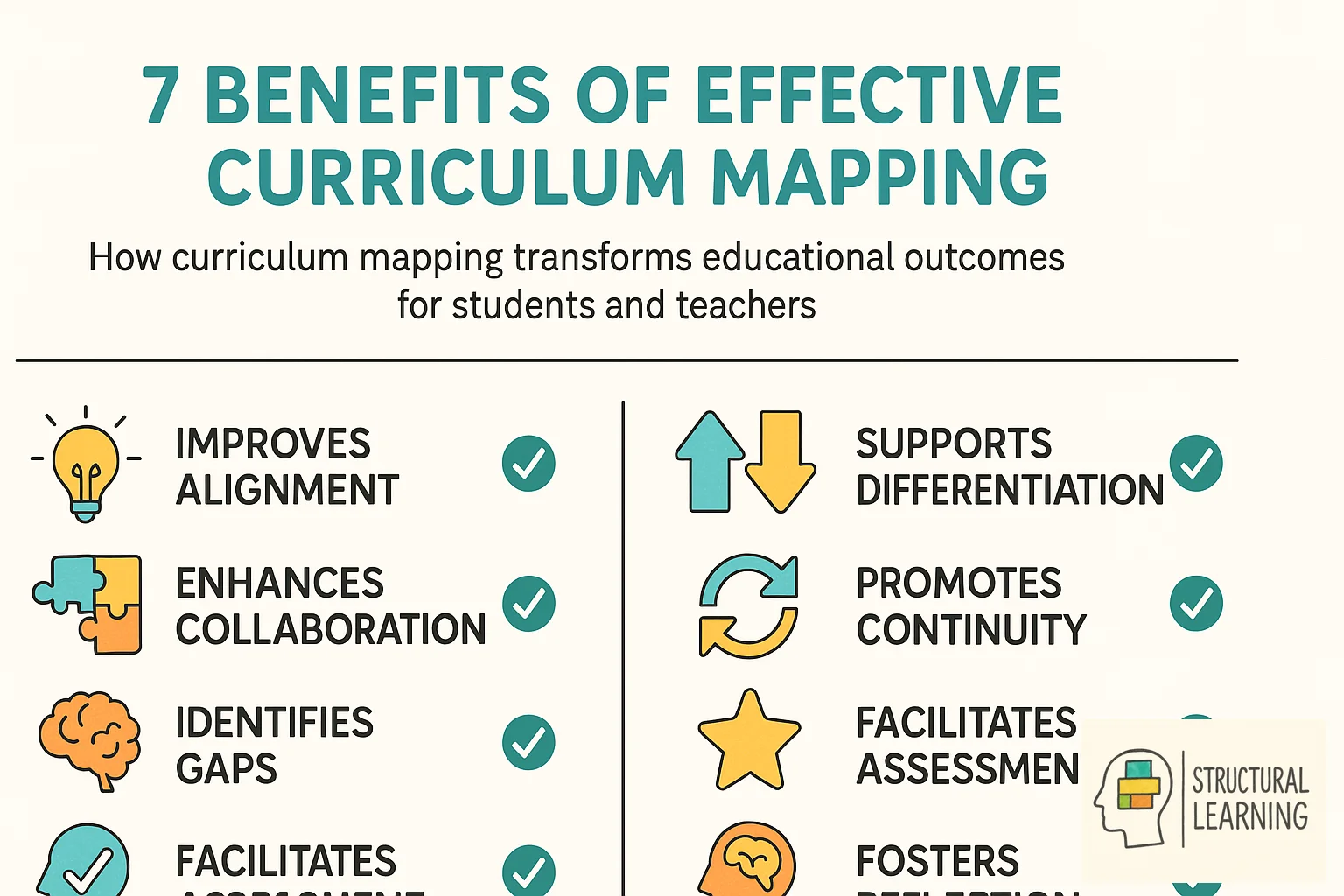
Curriculum mapping can be used to review and revise the curriculum by identifying gaps, redundancies, and areas for improvement. This process involves gathering feedback from educators, analyzing assessment data, and updating the curriculum to better meet the needs of students.

Key components of curriculum mapping include a clear scope and sequence, alignment with standards, and assessment data. The potential benefits for educators and students include improved instructional coherence, alignment with standards, and a clearer understanding of the learning progression.
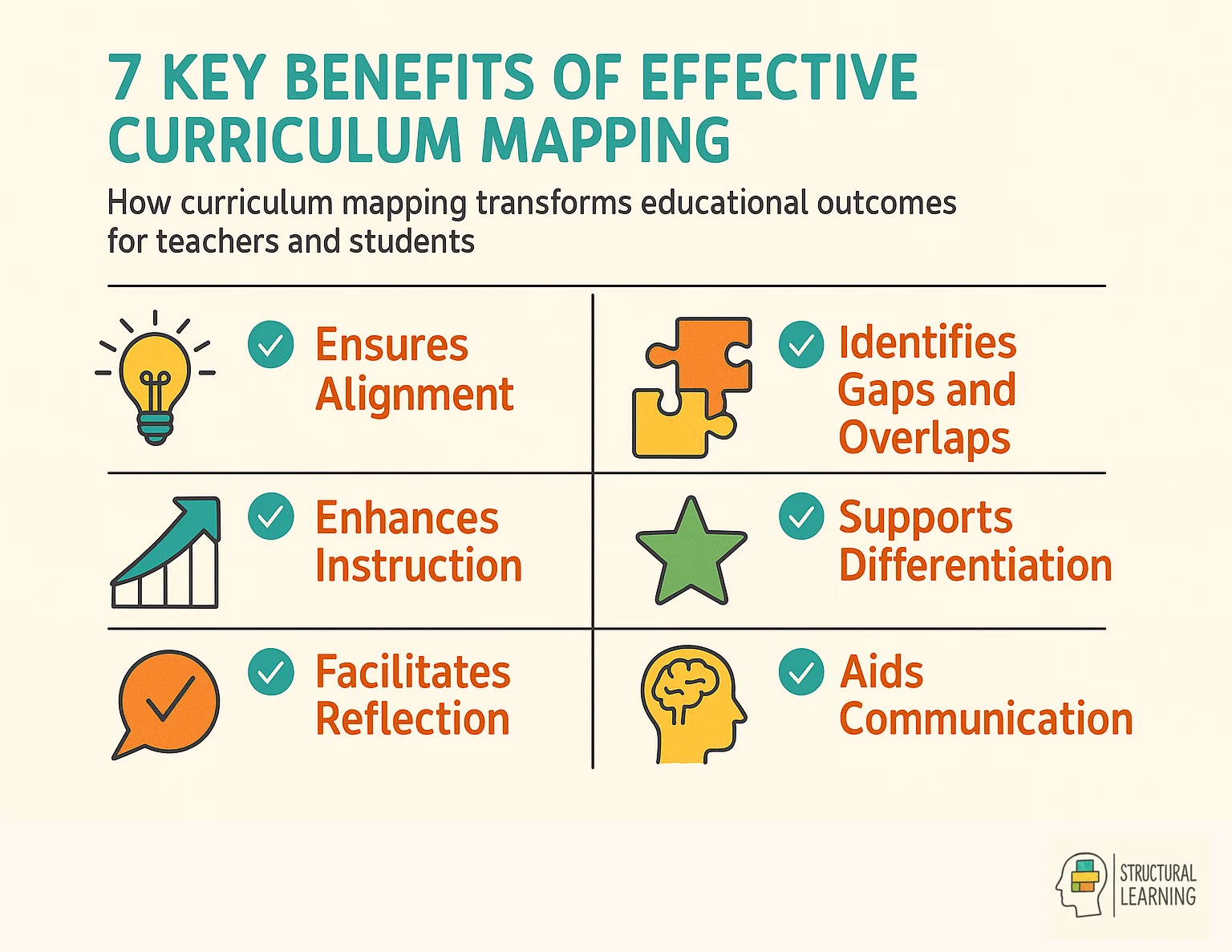
In this article, we will not only unravel the foundational principles that make curriculum mapping an indispensable tool for educators but also introduce a dynamic new instrument, the thinking framework. This innovative tool is designed to enhance educators' ability to develop effective learning sequences, ensuring that every step in the classroom is purposeful and impactful.

Through the thinking framework, teachers can refine their curriculum plans, align instructional strategies with learning outcomes, and foster an environment of success for every student. Join us as we navigate the multifaceted landscape of curriculum mapping, empowered by the thinking framework to transform educational theory into classroom practice.
Curriculum mapping helps schools identify learning gaps, reduce content redundancies, and ensure consistent teaching across year levels. It improves student achievement by aligning assessments with learning objectives and provides teachers with a clear overview of what content is covered when. The process also facilitates better collaboration between teachers and departments.
Curriculum mapping serves as a critical compass in educational settings, guiding the development of curriculum plans that are reflective, cohesive, and effective. It aligns teaching strategies with academic courses and learning expectations, ensuring every student benefits from consistent and high-quality instruction. With the thinking framework as an underpinning structure, educators can harness these seven benefits to optimize educational results.
Reflective practice is embedded within the thinking framework, providing a systematic approach to continual improvement. As renowned educator John Dewey stated, "We do not learn from experience... we learn from reflecting on experience." This sentiment echoes the core advantage of curriculum mapping when fused with the thinking framework, it not only charts a course for academic delivery but also invites ongoing refinement to meet the dynamic landscape of education.

Curriculum mapping is essential in promoting interdisciplinary coherence by facilitating faculty collaboration to align courses with program goals and create a cohesive educational experience for students. By working together, faculty can ensure that different courses complement each other, reinforcing key concepts and skills across disciplines.
Digital curriculum mapping allows faculty to access each other's plans and collaborate to ensure students in different classes come away with similar knowledge. This promotes a more unified and comprehensive learning experience for students, as they are exposed to consistent and interconnected material throughout their courses.
Faculty collaboration in curriculum mapping is crucial for developing newfound abilities and creating a collaborative culture. By working together, faculty can share their expertise and perspectives, leading to the creation of innovative and comprehensive educational strategies. This collaboration also fosters a culture of teamwork and communication, ultimately benefiting students and the overall educational experience.
Curriculum mapping helps to close gaps in the curriculum by highlighting areas where certain subjects or skills may be lacking. This allows faculty to intentionally address these gaps, ensuring that students receive a well-rounded education.
Furthermore, curriculum mapping connects degree programs to occupations by aligning learning gains with the skills and knowledge needed in the workforce. This ensures that students are prepared for their future careers and contributes to increased employment and career success.
Curriculum mapping also helps measure academic progress by providing a clear framework for assessment. This allows faculty to identify areas of strength and weakness in the curriculum and make targeted improvements to enhance student learning. By continually evaluating and refining the curriculum, educators can ensure that students are receiving a high-quality education that prepares them for the demands of the workforce.
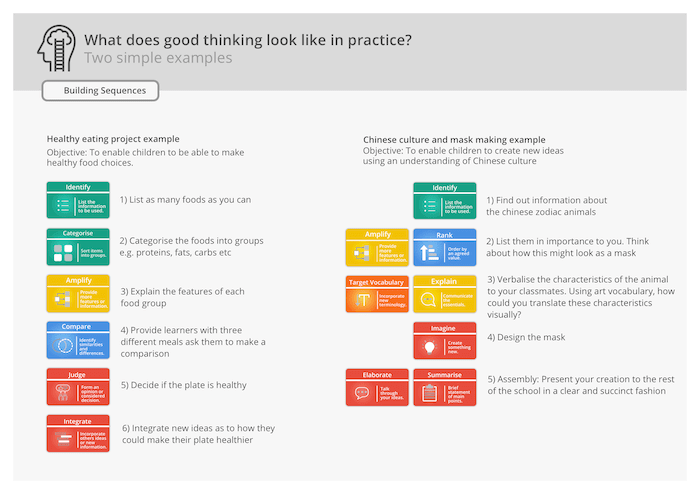
Start by documenting your current curriculum content, learning objectives, and assessments in a structured format. Then apply the thinking framework to analyze connections between topics, identify gaps, and ensure proper sequencing of concepts. The final step involves reviewing student performance data to refine and improve the curriculum alignment.
The typical approach to curriculum mapping begins with an analysis of existing curriculum documents and standards. Then, educators collaboratively identify essential skills and concepts, and map these to the curriculum. Through ongoing reflection and feedback, educators identify and address coverage gaps and redundancies. Transparent documentation of instructional outcomes ensures accountability and informs future instructional decisions.
Using a thinking framework to analyze alignment to standards and document instructional outcomes ensures a comprehensive and coherent curriculum.
By adhering to these steps, teachers can harness the benefits of curriculum mapping, creating a structured, thoughtful, and inclusive educational plan that meets the diverse needs of their students and aligns with the deep skill development envisioned in the thinking framework.
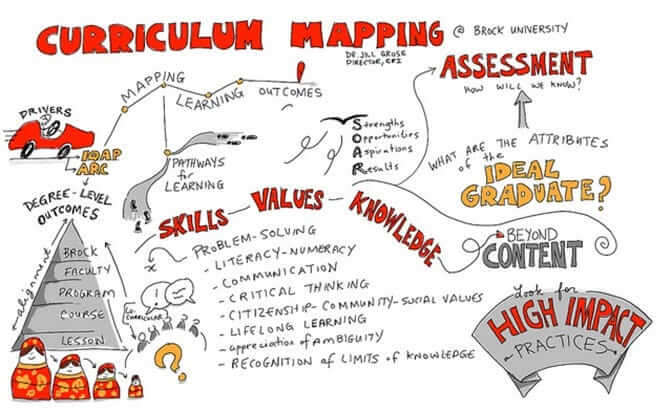
Embed assessments by aligning each evaluation method directly with specific learning objectives in your curriculum map. Document both formative and summative assessments alongside the content they measure, including timing and success criteria. This ensures every assessment serves a clear purpose and provides actionable data for improving student learning.
One way to embed assessment into a curriculum map is by clearly defining specific student achievement for each unit or module, and then aligning these outcomes with appropriate assessment methods. For example, if the learning outcome is to demonstrate understanding of a concept, a quiz or exam may be used. If the outcome is to apply knowledge in a real-world context, a project or presentation may be more suitable. By mapping the educational results with corresponding assessment methods, educators can ensure that all aspects of student learning are being assessed.
To track student progress, data from assessments should be collected and analyzed regularly. This data can then be used to inform curriculum adjustments, such as the need for additional review on specific topics or the modification of teaching methods. Using the right assessment tools and techniques is crucial for accurate and reliable data collection. Educators must choose assessments that are aligned with the learning goals and are capable of measuring student understanding effectively.

Teachers can collaborate by forming grade-level or subject teams that meet regularly to review and align their curriculum maps. Use shared digital tools or templates to document curriculum elements and track cross-curricular connections in real-time. Schedule periodic reviews where teams analyze student data together and make collective decisions about curriculum improvements.
Collaborative approaches to curriculum mapping in schools involve the active involvement of teachers and other stakeholders in the development and implementation of curriculum maps. This process typically begins with a team or committee coming together to analyze standards, identify essential learning gains, and map out the sequence and alignment of these outcomes across grade levels and subject areas.
The development phase involves ongoing discussions, feedback, and revisions to ensure that all perspectives are considered and that the maps accurately reflect the intended curriculum.
Examples of schools and educational institutions that have successfully utilized collaborative approaches to curriculum mapping include the University of Pittsburgh's Institute for Learning, the International Baccalaureate (IB) program, and various public school districts such as Baltimore County Public Schools and Fairfax County Public Schools.
Overall, collaborative approaches to curriculum mapping promote a shared understanding of curriculum priorities, enhance teacher collaboration, and support the ongoing improvement of teaching and learning practices.

Curriculum maps enable personalized learning by clearly showing prerequisite skills and learning progressions for different student ability levels. Teachers can use the maps to identify multiple pathways through content and create differentiated activities based on individual student needs. The visual nature of curriculum maps helps teachers quickly adapt instruction while maintaining alignment with overall learning goals.
Personalizing learning using curriculum maps involves first identifying specific academic progress for each subject or topic. By clearly defining what students are expected to learn, educators can then make necessary curriculum changes based on the evaluation of the map. This may include modifying lesson plans, adjusting assessments, or integrating new resources to better align with the desired outcomes.
Regularly evaluating the curriculum map is crucial to ensure that it remains relevant and effective. Educators and curriculum developers should use the right tools, such as mapping software or collaborative platforms, to facilitate collaboration and sharing of best practices. This allows for continual improvement and adjustment of the curriculum to meet the ever-changing needs of students.
Faculty and students can benefit greatly from a personalized learning approach through curriculum mapping. Faculty can tailor their teaching to meet the specific needs and interests of their students, while students can take ownership of their learning by understanding and working towards clear skill development. This approach ultimately leads to a more engaging and effective learning experience for all involved.
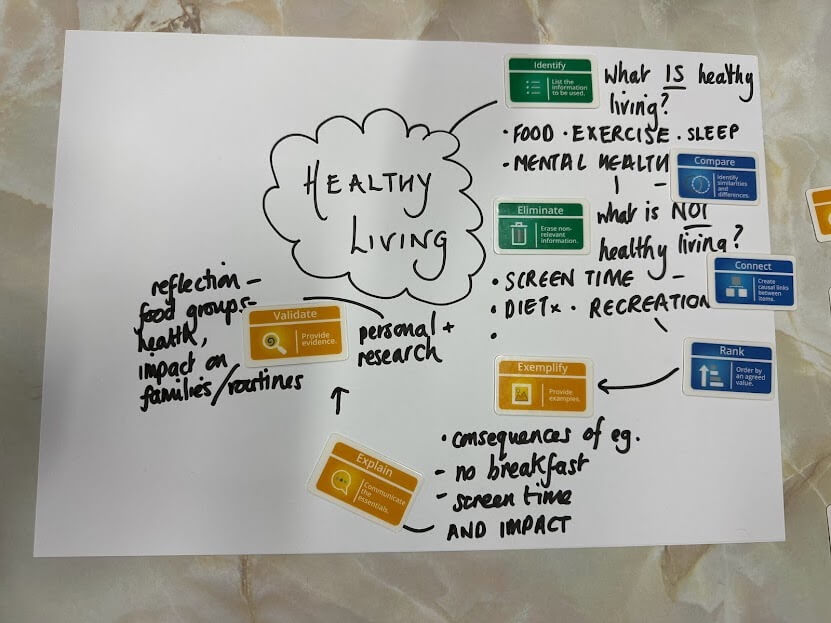
Align pedagogy with curriculum intentions by selecting teaching strategies that directly support the specific learning objectives identified in your curriculum map. Review each unit's goals and choose instructional methods that match the cognitive level required, whether it's direct instruction for foundational concepts or inquiry-based learning for higher-order thinking. Regular reflection on student outcomes helps ensure your teaching methods effectively deliver the intended curriculum.
Once your curriculum map has been established, the next step is to bring it to life in the classroom. This is where instructional methods take centre stage. By selecting pedagogical strategies that directly support your learning intentions, you ensure that classroom practice reflects the aims and structure of the curriculum. Below are key approaches to consider when translating curriculum maps into impactful teaching and learning:
Graphic organizers offer a structured way for learners to categorize, sequence, or connect ideas. Whether using a Venn diagram to explore similarities or a fishbone diagram to examine causes and effects, these tools help bridge abstract concepts with visual clarity, ideal for reinforcing session student achievement.
Oracy-focused techniques like Think-Pair-Share and Talk Tactics encourage learners to reason through ideas collaboratively. Embedding exploratory talk into your curriculum allows students to test hypotheses, explain their thinking, and refine ideas through dialogue, deepening understanding while supporting interpersonal skill development.
Opportunities for explanatory talk, where learners verbally rehearse or present their thinking, serve as an effective method for retrieval practice. This not only consolidates prior learning but also makes metacognition visible, enabling both learners and teachers to identify learning gaps.
Digital tools can enhance curriculum delivery by offering learners diverse ways to present their knowledge. From recorded presentations to collaborative mind mapping, technology creates space for differentiation and supports varied learner preferences across the academic program.
When pedagogy is aligned thoughtfully with curriculum intentions, learning becomes more coherent, purposeful, and engaging. These methods help ensure that instructional delivery matches the ambitions of your curriculum map, supporting both individual and collective progress.

Research shows that curriculum mapping significantly improves student achievement by ensuring comprehensive coverage of standards and reducing learning gaps. Studies indicate that schools using systematic curriculum mapping see increased teacher collaboration and more coherent instruction across grade levels. The evidence also demonstrates that curriculum mapping helps teachers make data-driven decisions about instruction and assessment practices.
Here are five key studies on curriculum mapping, highlighting its importance and effect on student attainment and progress:
Curriculum mapping is the process of documenting and aligning instructional standards and outcomes to provide teachers with a clear overview of what is being taught, when, and how it's assessed. It ensures the curriculum is cohesive, comprehensive, and aligned with standards whilst helping schools identify learning gaps, reduce content redundancies, and maintain consistent teaching across year levels.
Curriculum mapping exposes hidden learning gaps by systematically documenting what content is covered across different subjects and year levels, revealing areas where certain subjects or skills may be lacking. Teachers can then intentionally address these gaps through targeted curriculum improvements, ensuring students receive a well-rounded education that prepares them for future success.
The thinking framework transforms curriculum mapping from a compliance exercise into a powerful tool for student achievement by facilitating standards alignment, refining instruction, and fostering collaboration between educators. It also supports differentiated learning pathways, provides structured data analysis for decision-making, and enhances accountability through transparent progress tracking.
Digital curriculum mapping allows faculty to access each other's plans and work together to ensure students across different classes receive similar knowledge and consistent concepts. This promotes interdisciplinary coherence by helping teachers align courses with programme goals, share expertise, and create innovative educational strategies that reinforce key concepts across subjects like maths, science, and English.
Schools can use various approaches including spreadsheets, software tools, and visual maps to document the sequence and progression of learning. The process involves identifying key curriculum components such as learning objectives, assessments, and resources, then aligning them with standards and benchmarks using a structured thinking framework.
Curriculum mapping connects degree programmes to occupations by aligning learning outcomes with the skills and knowledge needed in the workforce, ensuring students are prepared for future careers. It helps measure academic progress through clear assessment frameworks, allowing educators to identify curriculum strengths and weaknesses whilst making targeted improvements that enhance employment prospects and career success.
Reflective practice is embedded within the thinking framework, providing a systematic approach to continual improvement that goes beyond simply charting academic delivery. As the process involves gathering feedback from educators and analysing assessment data, it invites ongoing refinement to meet the dynamic landscape of education and transform student performance data into targeted curriculum improvements.
Curriculum mapping is the process of documenting and aligning the instructional standards and outcomes of a curriculum. It provides teachers with a clear overview of what is being taught, when it is being taught, and how it is being assessed. The purpose of curriculum mapping is to ensure that the curriculum is cohesive, comprehensive, and aligned with standards and learning outcomes.
There are different approaches to curriculum mapping, including the use of spreadsheets, software tools, and visual maps to document the sequence and progression of learning. The process typically involves identifying the key components of the curriculum, such as learning objectives, assessments, and resources, and aligning them with standards and benchmarks.

Curriculum mapping can be used to review and revise the curriculum by identifying gaps, redundancies, and areas for improvement. This process involves gathering feedback from educators, analyzing assessment data, and updating the curriculum to better meet the needs of students.

Key components of curriculum mapping include a clear scope and sequence, alignment with standards, and assessment data. The potential benefits for educators and students include improved instructional coherence, alignment with standards, and a clearer understanding of the learning progression.

In this article, we will not only unravel the foundational principles that make curriculum mapping an indispensable tool for educators but also introduce a dynamic new instrument, the thinking framework. This innovative tool is designed to enhance educators' ability to develop effective learning sequences, ensuring that every step in the classroom is purposeful and impactful.

Through the thinking framework, teachers can refine their curriculum plans, align instructional strategies with learning outcomes, and foster an environment of success for every student. Join us as we navigate the multifaceted landscape of curriculum mapping, empowered by the thinking framework to transform educational theory into classroom practice.
Curriculum mapping helps schools identify learning gaps, reduce content redundancies, and ensure consistent teaching across year levels. It improves student achievement by aligning assessments with learning objectives and provides teachers with a clear overview of what content is covered when. The process also facilitates better collaboration between teachers and departments.
Curriculum mapping serves as a critical compass in educational settings, guiding the development of curriculum plans that are reflective, cohesive, and effective. It aligns teaching strategies with academic courses and learning expectations, ensuring every student benefits from consistent and high-quality instruction. With the thinking framework as an underpinning structure, educators can harness these seven benefits to optimize educational results.
Reflective practice is embedded within the thinking framework, providing a systematic approach to continual improvement. As renowned educator John Dewey stated, "We do not learn from experience... we learn from reflecting on experience." This sentiment echoes the core advantage of curriculum mapping when fused with the thinking framework, it not only charts a course for academic delivery but also invites ongoing refinement to meet the dynamic landscape of education.

Curriculum mapping is essential in promoting interdisciplinary coherence by facilitating faculty collaboration to align courses with program goals and create a cohesive educational experience for students. By working together, faculty can ensure that different courses complement each other, reinforcing key concepts and skills across disciplines.
Digital curriculum mapping allows faculty to access each other's plans and collaborate to ensure students in different classes come away with similar knowledge. This promotes a more unified and comprehensive learning experience for students, as they are exposed to consistent and interconnected material throughout their courses.
Faculty collaboration in curriculum mapping is crucial for developing newfound abilities and creating a collaborative culture. By working together, faculty can share their expertise and perspectives, leading to the creation of innovative and comprehensive educational strategies. This collaboration also fosters a culture of teamwork and communication, ultimately benefiting students and the overall educational experience.
Curriculum mapping helps to close gaps in the curriculum by highlighting areas where certain subjects or skills may be lacking. This allows faculty to intentionally address these gaps, ensuring that students receive a well-rounded education.
Furthermore, curriculum mapping connects degree programs to occupations by aligning learning gains with the skills and knowledge needed in the workforce. This ensures that students are prepared for their future careers and contributes to increased employment and career success.
Curriculum mapping also helps measure academic progress by providing a clear framework for assessment. This allows faculty to identify areas of strength and weakness in the curriculum and make targeted improvements to enhance student learning. By continually evaluating and refining the curriculum, educators can ensure that students are receiving a high-quality education that prepares them for the demands of the workforce.

Start by documenting your current curriculum content, learning objectives, and assessments in a structured format. Then apply the thinking framework to analyze connections between topics, identify gaps, and ensure proper sequencing of concepts. The final step involves reviewing student performance data to refine and improve the curriculum alignment.
The typical approach to curriculum mapping begins with an analysis of existing curriculum documents and standards. Then, educators collaboratively identify essential skills and concepts, and map these to the curriculum. Through ongoing reflection and feedback, educators identify and address coverage gaps and redundancies. Transparent documentation of instructional outcomes ensures accountability and informs future instructional decisions.
Using a thinking framework to analyze alignment to standards and document instructional outcomes ensures a comprehensive and coherent curriculum.
By adhering to these steps, teachers can harness the benefits of curriculum mapping, creating a structured, thoughtful, and inclusive educational plan that meets the diverse needs of their students and aligns with the deep skill development envisioned in the thinking framework.

Embed assessments by aligning each evaluation method directly with specific learning objectives in your curriculum map. Document both formative and summative assessments alongside the content they measure, including timing and success criteria. This ensures every assessment serves a clear purpose and provides actionable data for improving student learning.
One way to embed assessment into a curriculum map is by clearly defining specific student achievement for each unit or module, and then aligning these outcomes with appropriate assessment methods. For example, if the learning outcome is to demonstrate understanding of a concept, a quiz or exam may be used. If the outcome is to apply knowledge in a real-world context, a project or presentation may be more suitable. By mapping the educational results with corresponding assessment methods, educators can ensure that all aspects of student learning are being assessed.
To track student progress, data from assessments should be collected and analyzed regularly. This data can then be used to inform curriculum adjustments, such as the need for additional review on specific topics or the modification of teaching methods. Using the right assessment tools and techniques is crucial for accurate and reliable data collection. Educators must choose assessments that are aligned with the learning goals and are capable of measuring student understanding effectively.

Teachers can collaborate by forming grade-level or subject teams that meet regularly to review and align their curriculum maps. Use shared digital tools or templates to document curriculum elements and track cross-curricular connections in real-time. Schedule periodic reviews where teams analyze student data together and make collective decisions about curriculum improvements.
Collaborative approaches to curriculum mapping in schools involve the active involvement of teachers and other stakeholders in the development and implementation of curriculum maps. This process typically begins with a team or committee coming together to analyze standards, identify essential learning gains, and map out the sequence and alignment of these outcomes across grade levels and subject areas.
The development phase involves ongoing discussions, feedback, and revisions to ensure that all perspectives are considered and that the maps accurately reflect the intended curriculum.
Examples of schools and educational institutions that have successfully utilized collaborative approaches to curriculum mapping include the University of Pittsburgh's Institute for Learning, the International Baccalaureate (IB) program, and various public school districts such as Baltimore County Public Schools and Fairfax County Public Schools.
Overall, collaborative approaches to curriculum mapping promote a shared understanding of curriculum priorities, enhance teacher collaboration, and support the ongoing improvement of teaching and learning practices.

Curriculum maps enable personalized learning by clearly showing prerequisite skills and learning progressions for different student ability levels. Teachers can use the maps to identify multiple pathways through content and create differentiated activities based on individual student needs. The visual nature of curriculum maps helps teachers quickly adapt instruction while maintaining alignment with overall learning goals.
Personalizing learning using curriculum maps involves first identifying specific academic progress for each subject or topic. By clearly defining what students are expected to learn, educators can then make necessary curriculum changes based on the evaluation of the map. This may include modifying lesson plans, adjusting assessments, or integrating new resources to better align with the desired outcomes.
Regularly evaluating the curriculum map is crucial to ensure that it remains relevant and effective. Educators and curriculum developers should use the right tools, such as mapping software or collaborative platforms, to facilitate collaboration and sharing of best practices. This allows for continual improvement and adjustment of the curriculum to meet the ever-changing needs of students.
Faculty and students can benefit greatly from a personalized learning approach through curriculum mapping. Faculty can tailor their teaching to meet the specific needs and interests of their students, while students can take ownership of their learning by understanding and working towards clear skill development. This approach ultimately leads to a more engaging and effective learning experience for all involved.

Align pedagogy with curriculum intentions by selecting teaching strategies that directly support the specific learning objectives identified in your curriculum map. Review each unit's goals and choose instructional methods that match the cognitive level required, whether it's direct instruction for foundational concepts or inquiry-based learning for higher-order thinking. Regular reflection on student outcomes helps ensure your teaching methods effectively deliver the intended curriculum.
Once your curriculum map has been established, the next step is to bring it to life in the classroom. This is where instructional methods take centre stage. By selecting pedagogical strategies that directly support your learning intentions, you ensure that classroom practice reflects the aims and structure of the curriculum. Below are key approaches to consider when translating curriculum maps into impactful teaching and learning:
Graphic organizers offer a structured way for learners to categorize, sequence, or connect ideas. Whether using a Venn diagram to explore similarities or a fishbone diagram to examine causes and effects, these tools help bridge abstract concepts with visual clarity, ideal for reinforcing session student achievement.
Oracy-focused techniques like Think-Pair-Share and Talk Tactics encourage learners to reason through ideas collaboratively. Embedding exploratory talk into your curriculum allows students to test hypotheses, explain their thinking, and refine ideas through dialogue, deepening understanding while supporting interpersonal skill development.
Opportunities for explanatory talk, where learners verbally rehearse or present their thinking, serve as an effective method for retrieval practice. This not only consolidates prior learning but also makes metacognition visible, enabling both learners and teachers to identify learning gaps.
Digital tools can enhance curriculum delivery by offering learners diverse ways to present their knowledge. From recorded presentations to collaborative mind mapping, technology creates space for differentiation and supports varied learner preferences across the academic program.
When pedagogy is aligned thoughtfully with curriculum intentions, learning becomes more coherent, purposeful, and engaging. These methods help ensure that instructional delivery matches the ambitions of your curriculum map, supporting both individual and collective progress.

Research shows that curriculum mapping significantly improves student achievement by ensuring comprehensive coverage of standards and reducing learning gaps. Studies indicate that schools using systematic curriculum mapping see increased teacher collaboration and more coherent instruction across grade levels. The evidence also demonstrates that curriculum mapping helps teachers make data-driven decisions about instruction and assessment practices.
Here are five key studies on curriculum mapping, highlighting its importance and effect on student attainment and progress:
Curriculum mapping is the process of documenting and aligning instructional standards and outcomes to provide teachers with a clear overview of what is being taught, when, and how it's assessed. It ensures the curriculum is cohesive, comprehensive, and aligned with standards whilst helping schools identify learning gaps, reduce content redundancies, and maintain consistent teaching across year levels.
Curriculum mapping exposes hidden learning gaps by systematically documenting what content is covered across different subjects and year levels, revealing areas where certain subjects or skills may be lacking. Teachers can then intentionally address these gaps through targeted curriculum improvements, ensuring students receive a well-rounded education that prepares them for future success.
The thinking framework transforms curriculum mapping from a compliance exercise into a powerful tool for student achievement by facilitating standards alignment, refining instruction, and fostering collaboration between educators. It also supports differentiated learning pathways, provides structured data analysis for decision-making, and enhances accountability through transparent progress tracking.
Digital curriculum mapping allows faculty to access each other's plans and work together to ensure students across different classes receive similar knowledge and consistent concepts. This promotes interdisciplinary coherence by helping teachers align courses with programme goals, share expertise, and create innovative educational strategies that reinforce key concepts across subjects like maths, science, and English.
Schools can use various approaches including spreadsheets, software tools, and visual maps to document the sequence and progression of learning. The process involves identifying key curriculum components such as learning objectives, assessments, and resources, then aligning them with standards and benchmarks using a structured thinking framework.
Curriculum mapping connects degree programmes to occupations by aligning learning outcomes with the skills and knowledge needed in the workforce, ensuring students are prepared for future careers. It helps measure academic progress through clear assessment frameworks, allowing educators to identify curriculum strengths and weaknesses whilst making targeted improvements that enhance employment prospects and career success.
Reflective practice is embedded within the thinking framework, providing a systematic approach to continual improvement that goes beyond simply charting academic delivery. As the process involves gathering feedback from educators and analysing assessment data, it invites ongoing refinement to meet the dynamic landscape of education and transform student performance data into targeted curriculum improvements.